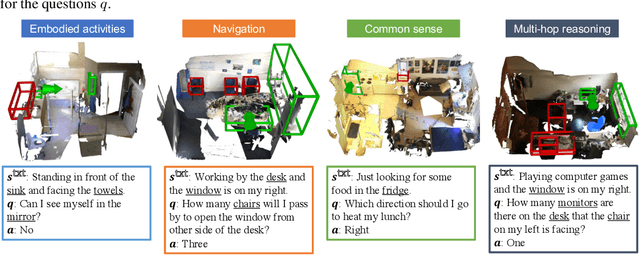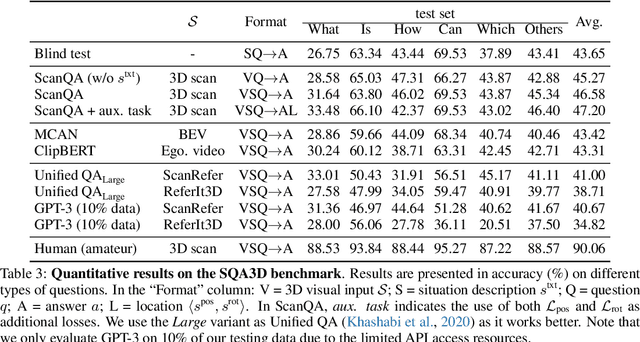Silong Yong
ONLY: One-Layer Intervention Sufficiently Mitigates Hallucinations in Large Vision-Language Models
Jul 01, 2025Abstract:Recent Large Vision-Language Models (LVLMs) have introduced a new paradigm for understanding and reasoning about image input through textual responses. Although they have achieved remarkable performance across a range of multi-modal tasks, they face the persistent challenge of hallucination, which introduces practical weaknesses and raises concerns about their reliable deployment in real-world applications. Existing work has explored contrastive decoding approaches to mitigate this issue, where the output of the original LVLM is compared and contrasted with that of a perturbed version. However, these methods require two or more queries that slow down LVLM response generation, making them less suitable for real-time applications. To overcome this limitation, we propose ONLY, a training-free decoding approach that requires only a single query and a one-layer intervention during decoding, enabling efficient real-time deployment. Specifically, we enhance textual outputs by selectively amplifying crucial textual information using a text-to-visual entropy ratio for each token. Extensive experimental results demonstrate that our proposed ONLY consistently outperforms state-of-the-art methods across various benchmarks while requiring minimal implementation effort and computational cost. Code is available at https://github.com/zifuwan/ONLY.
Aug3D: Augmenting large scale outdoor datasets for Generalizable Novel View Synthesis
Jan 11, 2025Abstract:Recent photorealistic Novel View Synthesis (NVS) advances have increasingly gained attention. However, these approaches remain constrained to small indoor scenes. While optimization-based NVS models have attempted to address this, generalizable feed-forward methods, offering significant advantages, remain underexplored. In this work, we train PixelNeRF, a feed-forward NVS model, on the large-scale UrbanScene3D dataset. We propose four training strategies to cluster and train on this dataset, highlighting that performance is hindered by limited view overlap. To address this, we introduce Aug3D, an augmentation technique that leverages reconstructed scenes using traditional Structure-from-Motion (SfM). Aug3D generates well-conditioned novel views through grid and semantic sampling to enhance feed-forward NVS model learning. Our experiments reveal that reducing the number of views per cluster from 20 to 10 improves PSNR by 10%, but the performance remains suboptimal. Aug3D further addresses this by combining the newly generated novel views with the original dataset, demonstrating its effectiveness in improving the model's ability to predict novel views.
Sigma: Siamese Mamba Network for Multi-Modal Semantic Segmentation
Apr 05, 2024Abstract:Multi-modal semantic segmentation significantly enhances AI agents' perception and scene understanding, especially under adverse conditions like low-light or overexposed environments. Leveraging additional modalities (X-modality) like thermal and depth alongside traditional RGB provides complementary information, enabling more robust and reliable segmentation. In this work, we introduce Sigma, a Siamese Mamba network for multi-modal semantic segmentation, utilizing the Selective Structured State Space Model, Mamba. Unlike conventional methods that rely on CNNs, with their limited local receptive fields, or Vision Transformers (ViTs), which offer global receptive fields at the cost of quadratic complexity, our model achieves global receptive fields coverage with linear complexity. By employing a Siamese encoder and innovating a Mamba fusion mechanism, we effectively select essential information from different modalities. A decoder is then developed to enhance the channel-wise modeling ability of the model. Our method, Sigma, is rigorously evaluated on both RGB-Thermal and RGB-Depth segmentation tasks, demonstrating its superiority and marking the first successful application of State Space Models (SSMs) in multi-modal perception tasks. Code is available at https://github.com/zifuwan/Sigma.
An Embodied Generalist Agent in 3D World
Nov 18, 2023Abstract:Leveraging massive knowledge and learning schemes from large language models (LLMs), recent machine learning models show notable successes in building generalist agents that exhibit the capability of general-purpose task solving in diverse domains, including natural language processing, computer vision, and robotics. However, a significant challenge remains as these models exhibit limited ability in understanding and interacting with the 3D world. We argue this limitation significantly hinders the current models from performing real-world tasks and further achieving general intelligence. To this end, we introduce an embodied multi-modal and multi-task generalist agent that excels in perceiving, grounding, reasoning, planning, and acting in the 3D world. Our proposed agent, referred to as LEO, is trained with shared LLM-based model architectures, objectives, and weights in two stages: (i) 3D vision-language alignment and (ii) 3D vision-language-action instruction tuning. To facilitate the training, we meticulously curate and generate an extensive dataset comprising object-level and scene-level multi-modal tasks with exceeding scale and complexity, necessitating a deep understanding of and interaction with the 3D world. Through rigorous experiments, we demonstrate LEO's remarkable proficiency across a wide spectrum of tasks, including 3D captioning, question answering, embodied reasoning, embodied navigation, and robotic manipulation. Our ablation results further provide valuable insights for the development of future embodied generalist agents.
SQA3D: Situated Question Answering in 3D Scenes
Oct 14, 2022



Abstract:We propose a new task to benchmark scene understanding of embodied agents: Situated Question Answering in 3D Scenes (SQA3D). Given a scene context (e.g., 3D scan), SQA3D requires the tested agent to first understand its situation (position, orientation, etc.) in the 3D scene as described by text, then reason about its surrounding environment and answer a question under that situation. Based upon 650 scenes from ScanNet, we provide a dataset centered around 6.8k unique situations, along with 20.4k descriptions and 33.4k diverse reasoning questions for these situations. These questions examine a wide spectrum of reasoning capabilities for an intelligent agent, ranging from spatial relation comprehension to commonsense understanding, navigation, and multi-hop reasoning. SQA3D imposes a significant challenge to current multi-modal especially 3D reasoning models. We evaluate various state-of-the-art approaches and find that the best one only achieves an overall score of 47.20%, while amateur human participants can reach 90.06%. We believe SQA3D could facilitate future embodied AI research with stronger situation understanding and reasoning capability.
 Add to Chrome
Add to Chrome Add to Firefox
Add to Firefox Add to Edge
Add to Edge